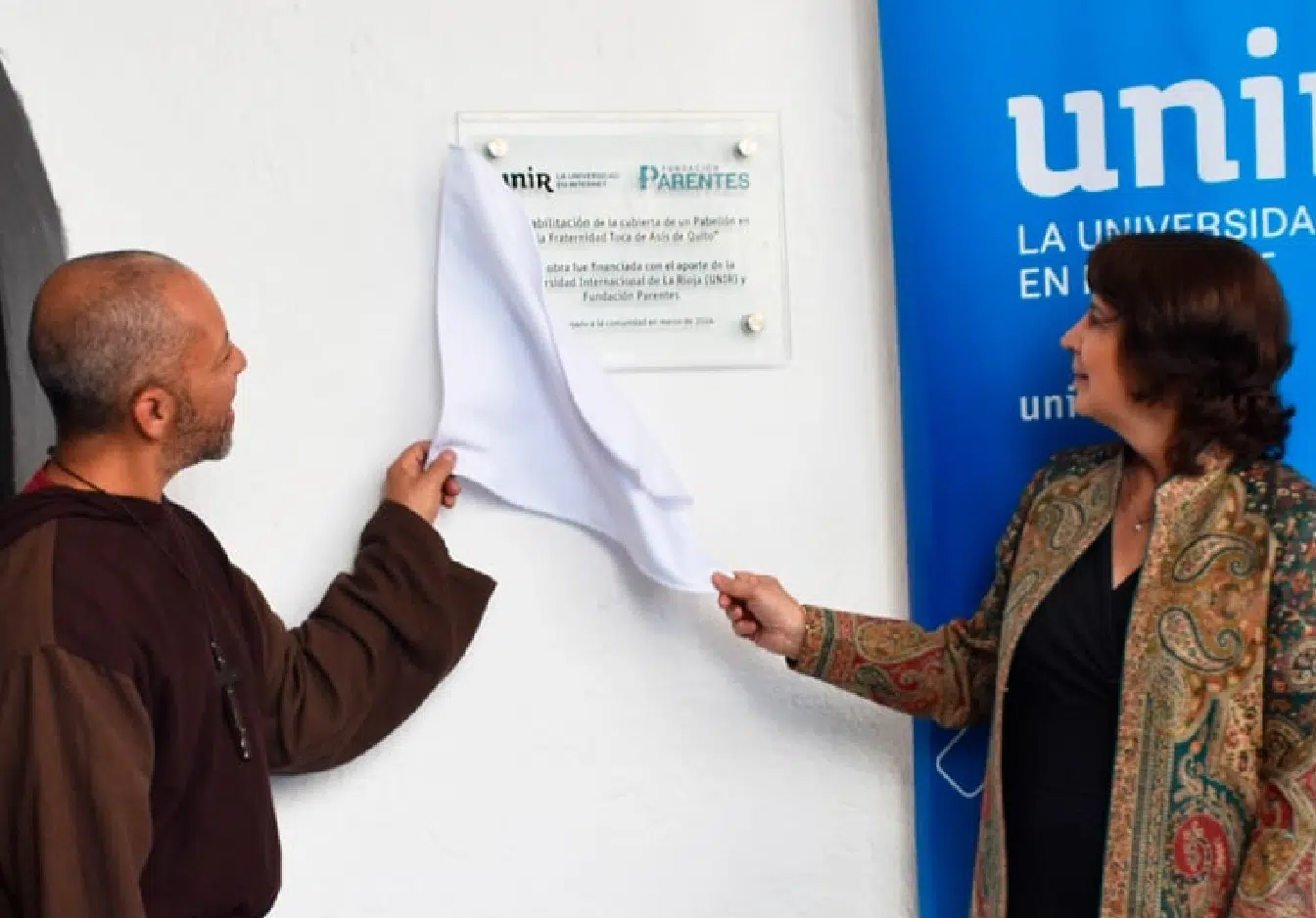The University and Parentes Foundation have financed the refurbishment of the pastoral pavilion of the emblematic colonial house. Thanks to the restoration, the Toca de Asís fraternity will be able to carry out its mission of caring for homeless people in better conditions.
The International University of La Rioja (UNIR), together with Parentes Foundation, has promoted the restoration of the roof of the pastoral pavilion of the Toca de Asís Institute, a 17th century Mercedarian house in the historic centre of Quito.
The project is part of the social responsibility programme that the educational institution is developing in Ecuador with the aim of conserving the country’s cultural heritage; thanks to which a part of the building has been restored where the brothers of Toca de Asís can continue their work in favour of the most needy.
To celebrate this initiative, a formal ceremony was held in the San José chapel, a jewel of colonial baroque architecture located within the hacienda. It was attended by ecclesiastical, cultural, social and educational authorities.
Afterwards, a plaque was unveiled under the roof of the restored pavilion, symbolically marking the handover of the work. All of this was enlivened by the musical performance of the Fundación Orquesta Sinfónica Juvenil del Ecuador.
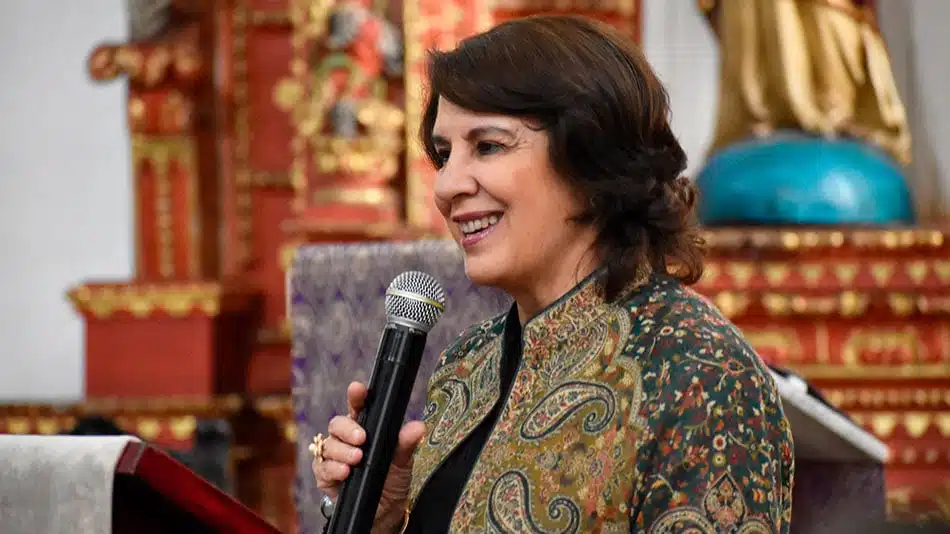
Rosalía Arteaga, president of UNIR in Ecuador.
These activities were led by Rosalía Arteaga, president of UNIR in Ecuador, Brother Josafa, custodian of the Toca de Asís Institute, and Catalina Tello, executive director of the National Institute of Cultural Heritage (INPC), who said: “It is an honour for us to be present in this space together with UNIR, with whom we have also signed an academic agreement. We hope to continue contributing to this type of work for the historical conservation of the city of Quito”.
Rosalía Arteaga expressed similar satisfaction: “This house is not only important for its historical and patrimonial significance, but also for the social work that the brotherhood carries out, offering hope to vulnerable people through its services, facilitated by the work that we are inaugurating. We are also grateful to Parentes Foundation for its support to different educational and welfare initiatives”, he emphasised.
Quality and inclusion
After the unveiling of the plaque, Rosalia emphasised the University’s spirit of quality work in education and inclusion. “We are reaching out to sectors that were previously not served by other institutions. We aspire to continue working with the community,” she stressed.
For Brother Josafa, this work had a very important meaning: “Thanks to funding from UNIR and Fundación Parentes, the roof of a corridor has been rehabilitated, where the dining room tables are placed. This work will allow more people in street situations to benefit and to have access to a better quality of life”, he said.
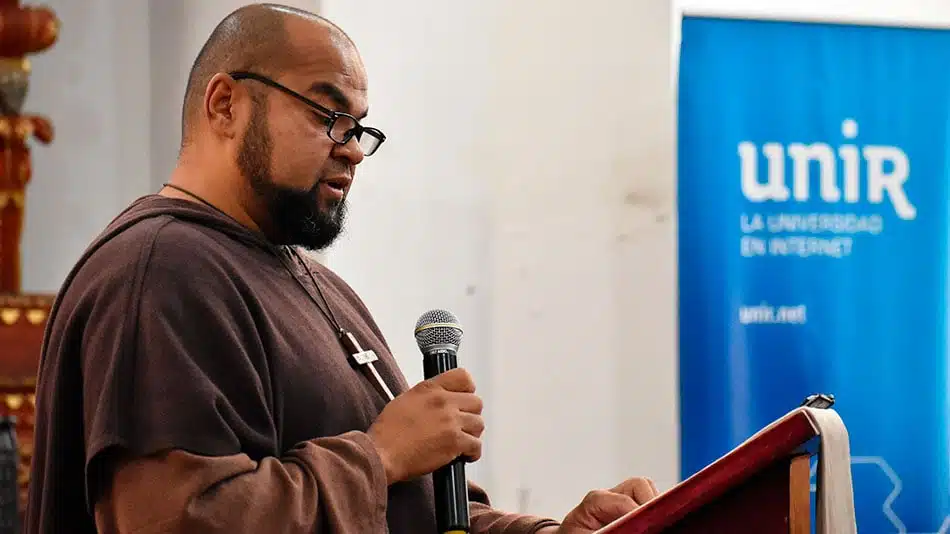
Brother Josafa, custodian of the Toca de Asís Institute.
Some of the authorities who attended the event were Sebastián Insuasti, Undersecretary of Entrepreneurship, Art and Innovation; Iveth Jaramillo, delegate of the Secretary of Inclusion of the Municipality of Quito; Jorge Sempertegui, technical sub-director of the National Institute of Cultural Heritage; Rómulo López, president of the Confederation of Catholic Establishments of Ecuador CONFEDEC; Monserrat Creamer, former minister of Education and Education of Ecuador CONFEDEC; Rómulo López, president of the Confederation of Catholic Establishments of Ecuador CONFEDEC; Monserrat Creamer, former Minister of Education and member of the Advisory Council of UNIR Ecuador; Ricardo Dueñas, CEO Grupo Ekos and member of the Advisory Council of UNIR Ecuador; and Pablo Guayasamín, president of Fundación Guayasamín and member of the Advisory Council of UNIR Ecuador.
Aspects of the work
The project began on 14 July 2023 and ended on 14 December of the same year. It had three phases with an investment of $73,000.
In the first two phases, the work area was restricted to determine elements that could be reused or repaired, unusable walls were demolished and new profiles were prepared to support the roof, with the implementation of a new sill and double thickness in the assembly. From the “skeleton”, finally a specific steel roof, DP-5, was installed to guarantee the maintenance of the old structure, complemented with all types of construction components and culminating with the installation of the roof tile.
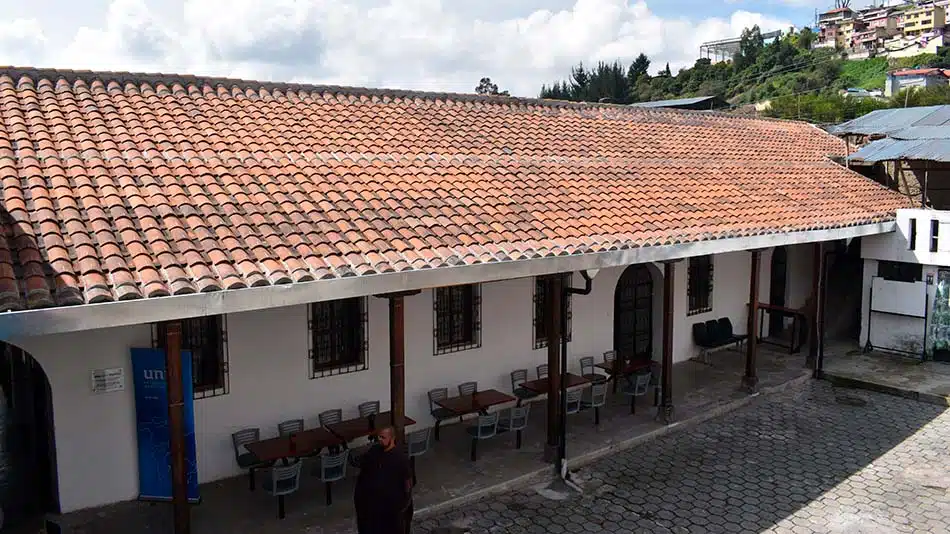
Aspect of the pastoral pavilion after the restoration promoted by UNIR and Fundación Parentes.
Diego Cordero, contractor and supervisor of the work, highlights aspects of its complexity: “The challenge was to keep the entire structure standing and its original typology. Introducing steel sheeting instead of asbestos cement, which is normally used in construction, was an achievement, but we also managed to conserve almost all of the existing wood, after a great deal of recovery work,” he explains.
A refuge for the needy and a cultural attraction
The work delivered allows the pavilion to regain its functionality as a pastoral area that the brothers of Toca de Asís need to carry out their work properly. This leads to improved shelter conditions and services that benefit the poor and marginalised. Thus, they are provided daily with food, clothing and hygiene products to clean themselves in the facilities of the house, and even receive the support of volunteers to cut their hair.
The Toca de Asís fraternity emerged in Brazil in 1994 with the vocation of its members to recover the dignity of the street poor within a Franciscan spirituality. This social work has been carried out in Ecuador since December 2006 by the Catholic religious institutes of the Sons of Poverty of the Blessed Sacrament.
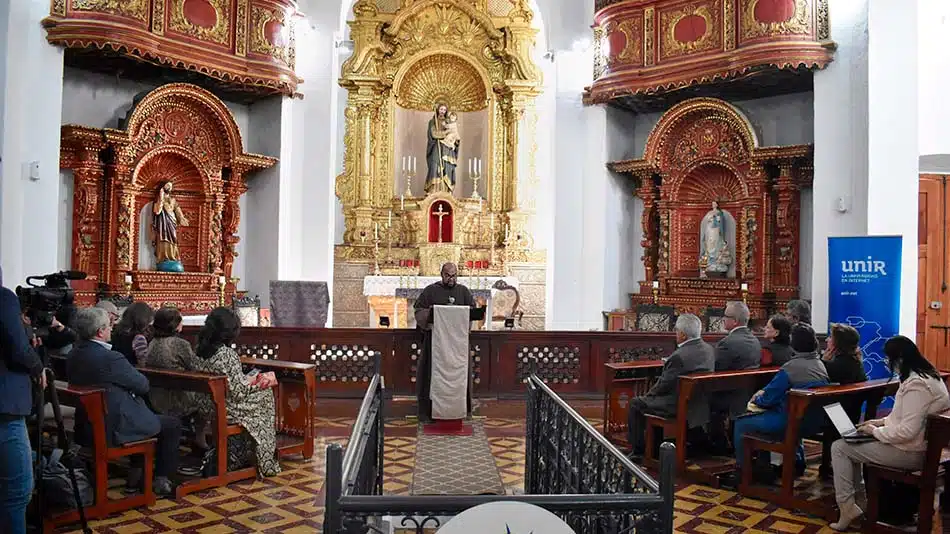
The first part of the event took place in the San José chapel, a jewel of the colonial past.
In addition to its pastoral mission, the religious institution is the protector of the colonial house it has as its headquarters, which houses a rich historical and artistic heritage in the San José chapel. The pulpit and the altar covered with gold leaf in the style of Legarda, and a representation of the Calvary of Jesus with carved sculptures attributed to Manuel Chili Caspicara, a famous indigenous sculptor and carver who belonged to the Quito School, stand out.
Lovers of the history of the Independence of Ecuador can visit the tomb of Eugenio Espejo in the crypt of the temple.
The house of Toca de Asís is not only a historic building in the urban fabric of Quito, but is also considered a symbol of solidarity, compassion and hope.
Committed to education and society
UNIR’s commitment in Ecuador is manifested through its 100% online academic activity, with more than 66,000 students in more than 90 countries; and in the promotion of social and cultural development projects in the country.
As an institution of Higher Education, UNIR’s aims include contributing to the progress of society through the creation and transmission of knowledge and the promotion of culture, training people with a comprehensive education and providing the territorial environment with resources and tools that favour social transformation and development.
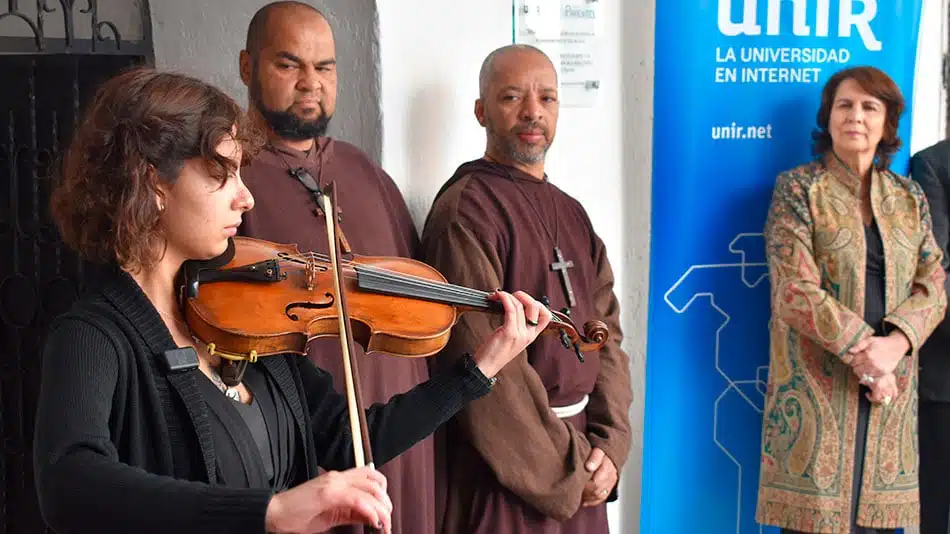
The event was enlivened by the musical performance of the Fundación Orquesta Sinfónica Juvenil del Ecuador.
Thousands of Ecuadorian students have graduated from UNIR’s virtual classrooms and have been able to access more than 130 official qualifications recognised by SENESCYT, under a European quality, innovative and practical teaching model that seeks continuous improvement focused on employability and excellence.
Similarly, UNIR’s commitment extends to promoting social and cultural development projects in the country. An example of this are the scholarships for indigenous peoples ‘Mishay Ñan. The path of triumph’; or some projects launched jointly with Parentes Foundation, such as the support programme for pregnant women and children suffering from malnutrition, and the recent delivery of “Perkins” Braille typewriters to the Leonardo Ponce Pozo School in Quito.
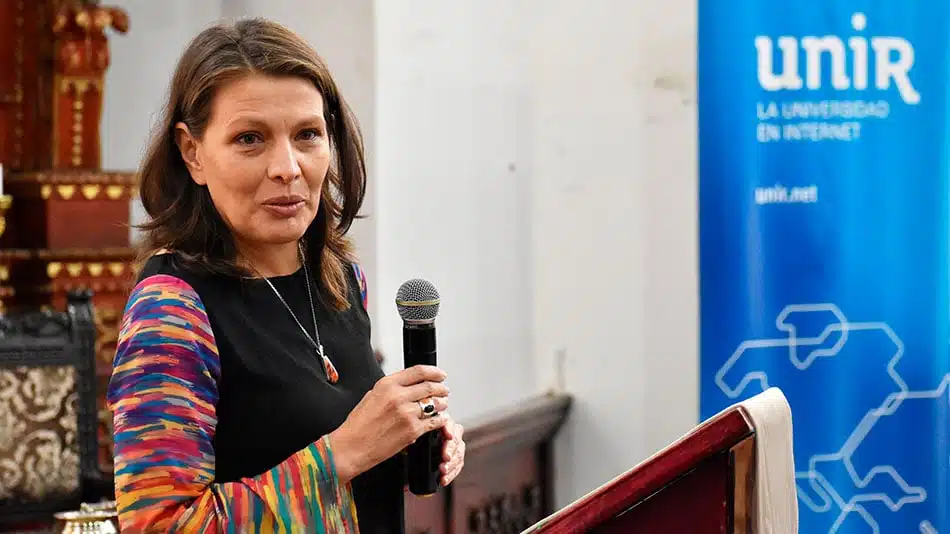
Catalina Tello, Executive Director of the National Institute of Cultural Heritage (INPC).
Descriptive video of the project.
